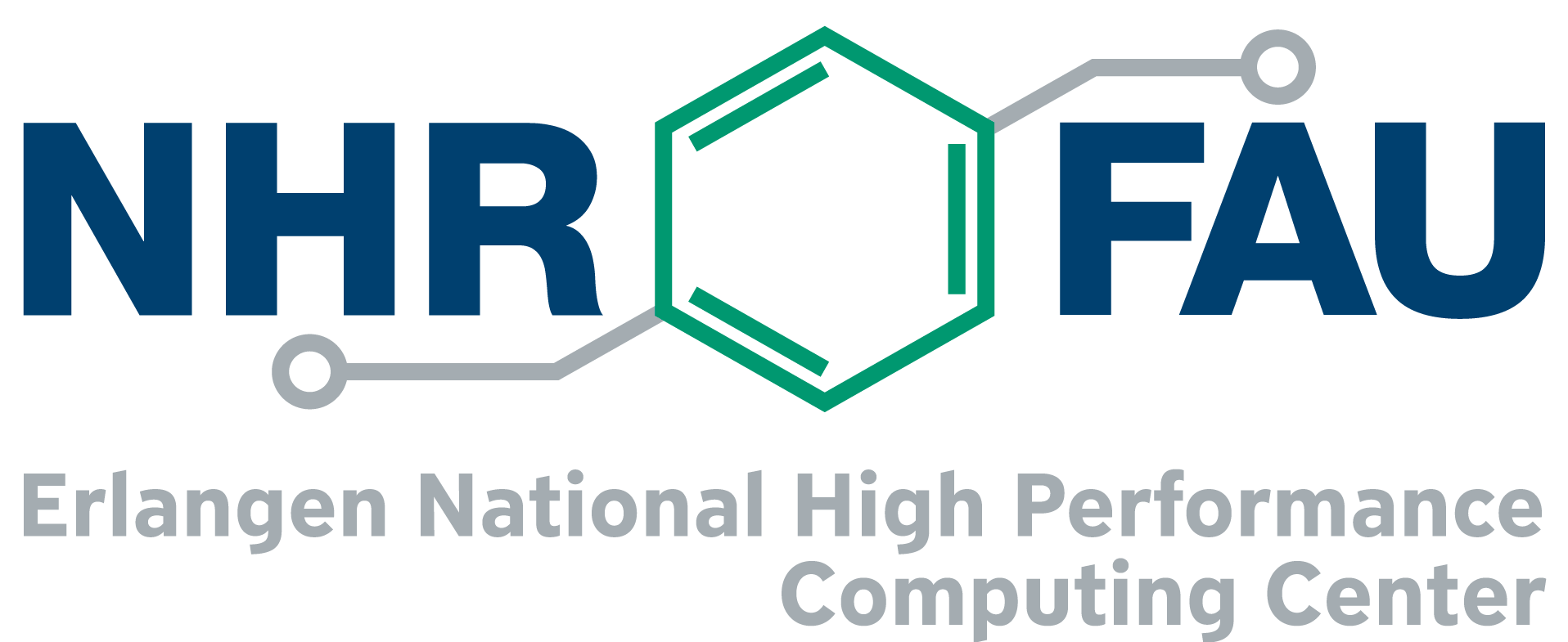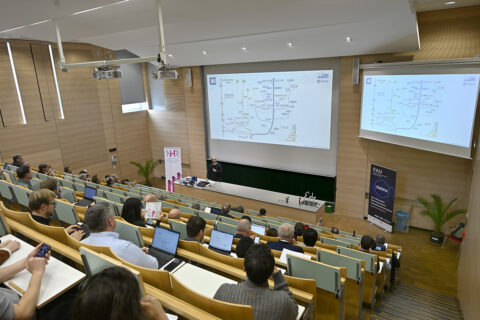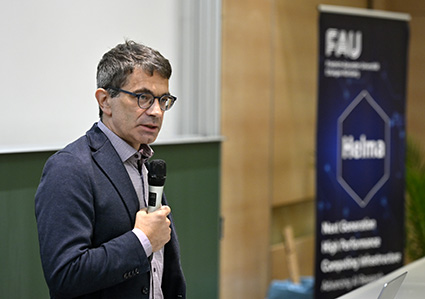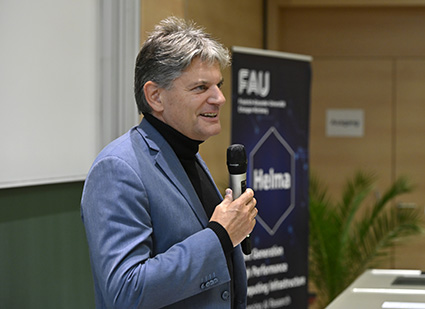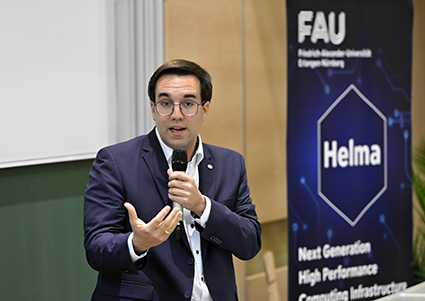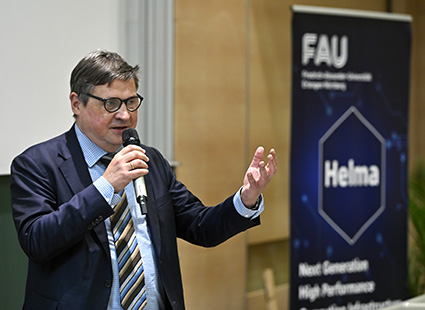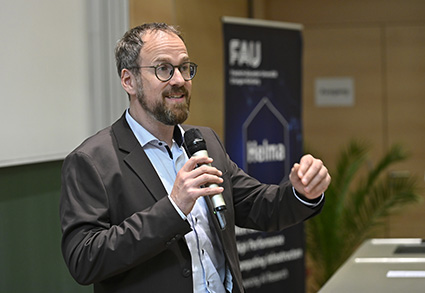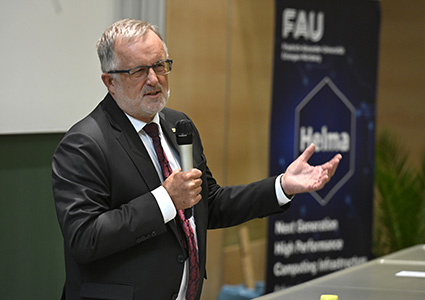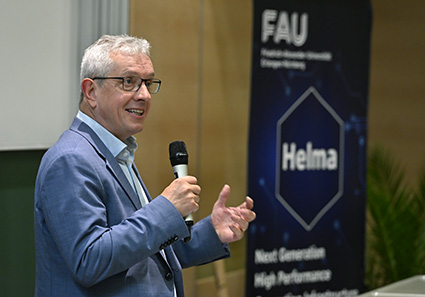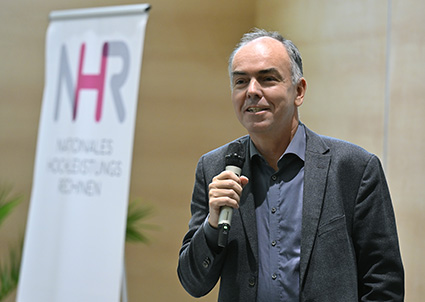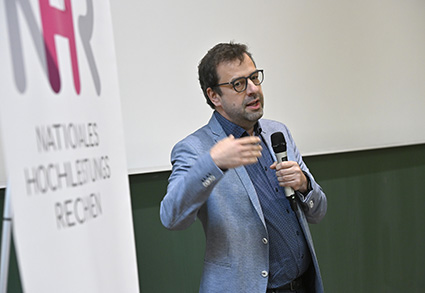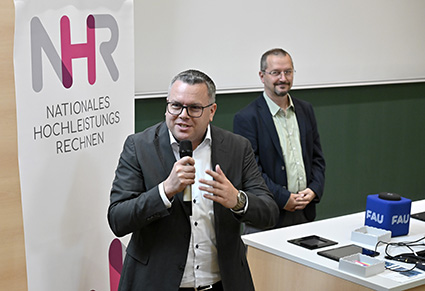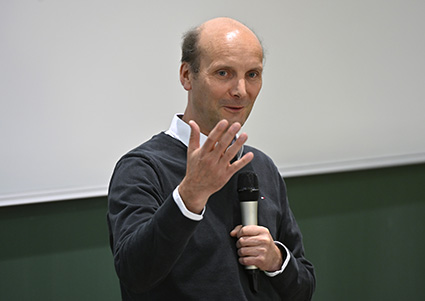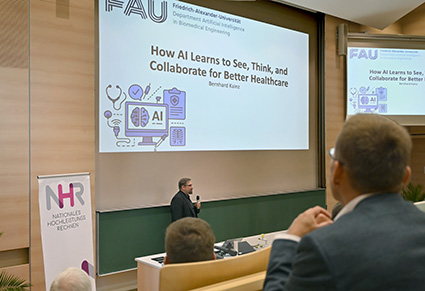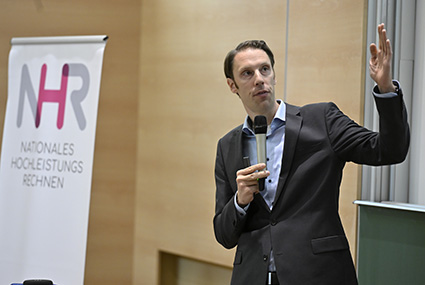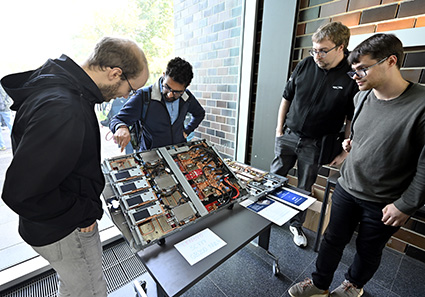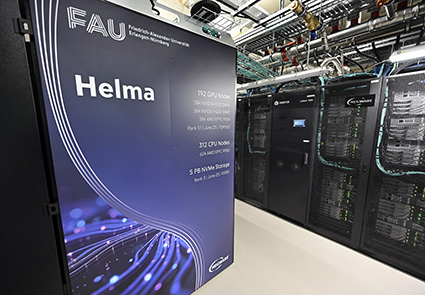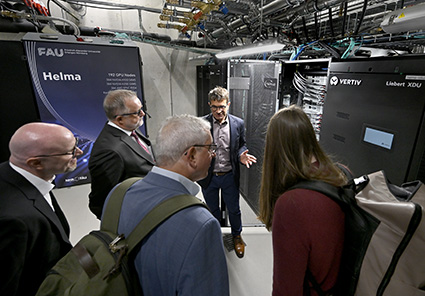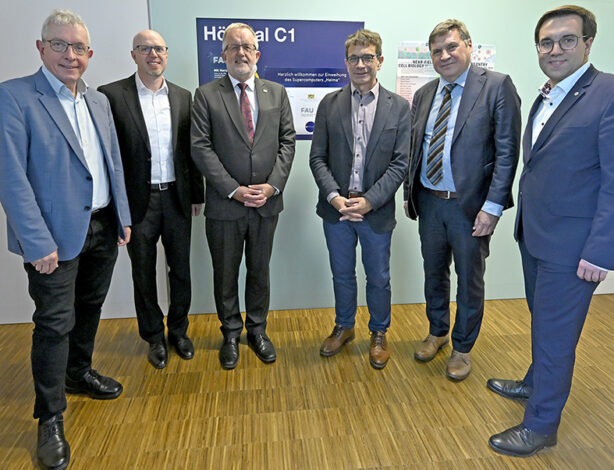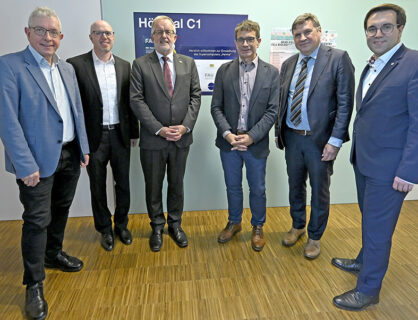Supercomputer “Helma” inaugurated: fastest computer at German universities
State-of-the-art technology for research: With a celebratory colloquium on Tuesday, September 30, the NHR@FAU officially inaugurated the most powerful AI computer system currently available at German universities. As part of the BayernKI for Science initiative, “Helma” provides infrastructure for cutting-edge applications and allows broad-based support for Bavarian researchers. The ceremony was attended by numerous guests from politics, academia, and industry.
Three plenary speakers gave in-depth explanations of their research projects.
- Prof. Dr. Andreas Hotho (JMU): “Llämmlein and ModernGBERT: Fully Transparent German LLM and Encoder Families Trained from Scratch”
- Prof. Dr. Bernhard Kainz (FAU): “How AI Learns to See, Think, and Collaborate: Vision-Language Models in Medical Imaging”
- Prof. Dr. Björn Ommer (LMU): “The Transformative Power of AI: From Information to Knowledge Society”

A “Science Blitz—AI in Medicine, Engineering, and Everyday Life” showcased the wide spectrum of applications supported by artificial intelligence.
Scientists from various universities showcased their research projects in lightning talks:
- Dr. Paula A. Perez-Toro (Pattern Recognition Lab @ FAU, led by Prof. Dr. Andreas Maier): “AMIS—Assessment of Motor Intent in Speech using MRI”
- Johanna P. Müller (IDEA Lab@FAU, led by Prof. Dr. Bernhard Kainz) covered “Diffusing Blind Spots”
- Dominik Wagner (AI Research Centre @ THN, led by Profs. Tobias Bocklet and Korbinian Riedhammer): “Speech AI for Health”
- Prof. Dr. Yuki M. Asano (FunAI Lab@UTN): “Self-Supervised Learning—Efficiently train models with unstructured data“
- Hesham Abdalla (Machine Learning Lab @ UTN, led by Prof. Dr. Josif Grabocka): “Foundation Models for Structured and Sequential Data”
- Dr. Luca Guastoni (Chair of Physics-based Simulations, School of Computation, Information, and Technology @ TUM, led by Prof. Dr. Nils Thuerey): “Foundation models for fluid simulations”
- Prof. Dr. Yan Xia (Department of Orthodontics @ FAU): “Unlocking cross-modality medical image generation through generative AI”
- Laurin Schmid (Pattern Recognition Lab@FAU, led by Prof. Dr. Andreas Maier): “TAXLLM—Lightweight specialized LLM for accurate tax law analysis”
- Prof. Dr. Fabian Flohr (Intelligent Vehicles Lab @ HS München): “Der kognitive Sprung: Der Weg zu anpassungsfähigen autonomen Fahrzeugen”
After the scientific part, the invited guests had the opportunity to visit the new supercomputer on site. A cozy get-together in a relaxed atmosphere concluded the successful celebration.
Initial projects are in progress
Helma is already being used intensively in many areas of science. For example, researchers at FAU’s Department of Artificial Intelligence in Biomedical Engineering (AIBE) are looking into how AI can be used to create cardiac ultrasound images. The creation of a language model for German tax law that uses an automated data pipeline to generate excellent training material is another project underway at the FAU Chair of Pattern Recognition. The goal is to ensure public access to AI-supported analyses in complex legal domains.
NHR@FAU provides essential computing power for AI projects along with extensive services: users benefit from tailored assistance in selecting appropriate hardware resources, customizing software, optimizing programs, managing data, and overall workflow organization. Furthermore, NHR@FAU personnel oversee current computing initiatives and consistently provide workshops and courses for both novice and experienced users.
Concerted action
All scientists at the Free State’s universities have easy and quick access to this computing capacity, which was also developed with funding from the state budget. The Bavarian state government wants to build a cutting-edge and potent AI computing infrastructure for universities using these and other investments at NHR@FAU and the Leibniz Supercomputing Centre (LRZ) of the Bavarian Academy of Sciences in Garching. The costs of Helma are largely shared by the federal government and the Free State of Bavaria within the framework of the High-Tech Agenda Germany, the FAU, the NHR Alliance, and the universities at Nürnberg, Eichstätt, Landshut, and Hof.
